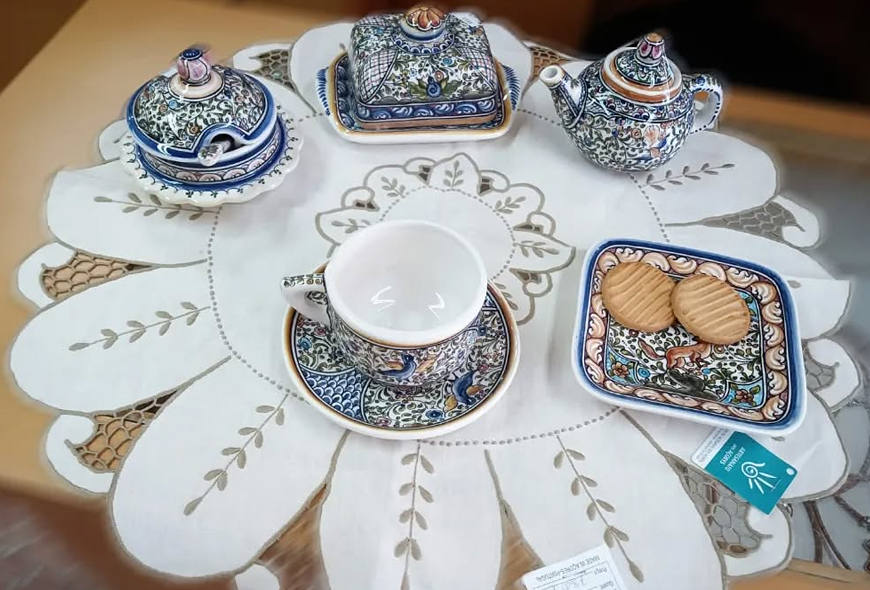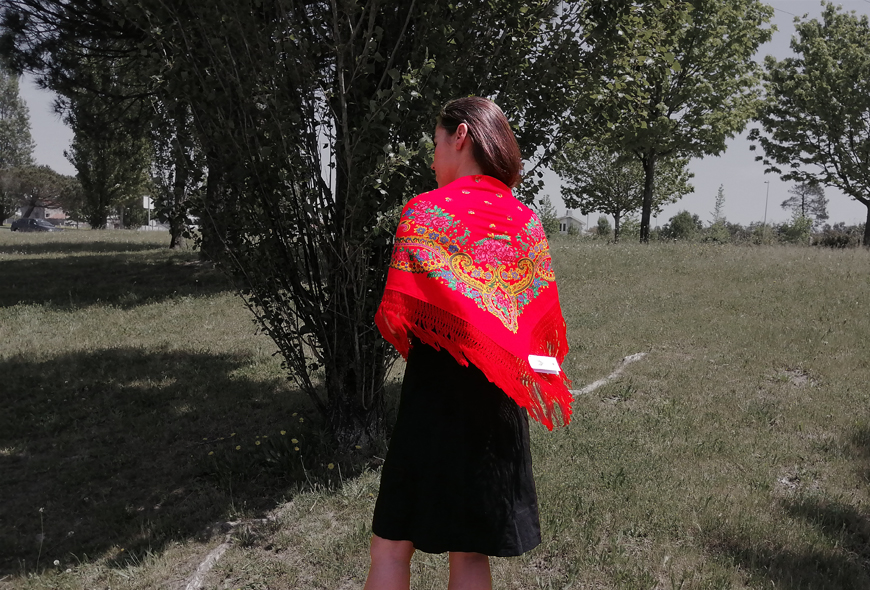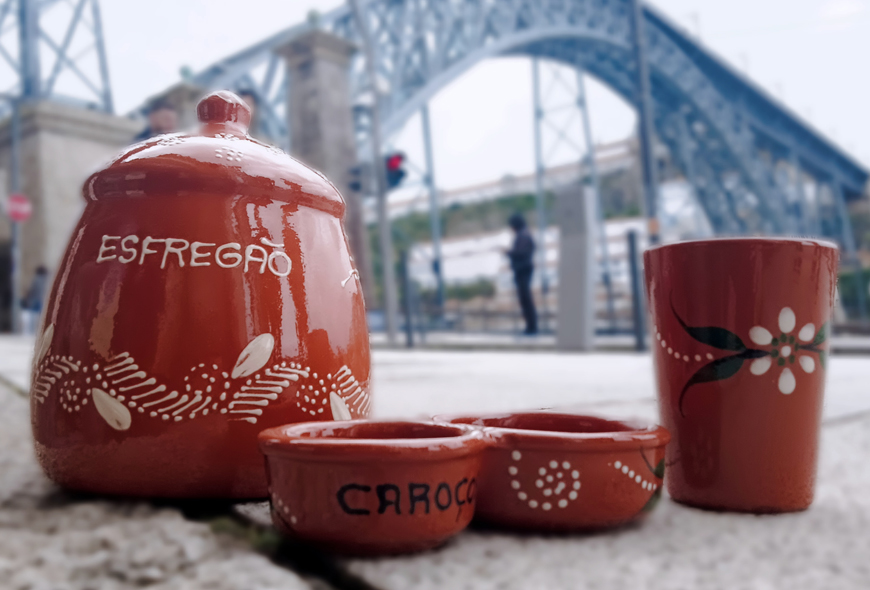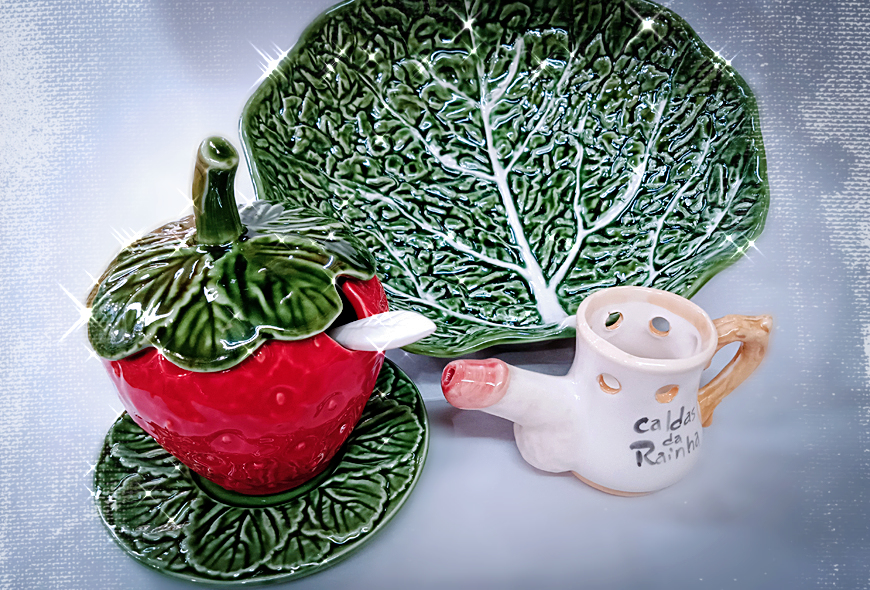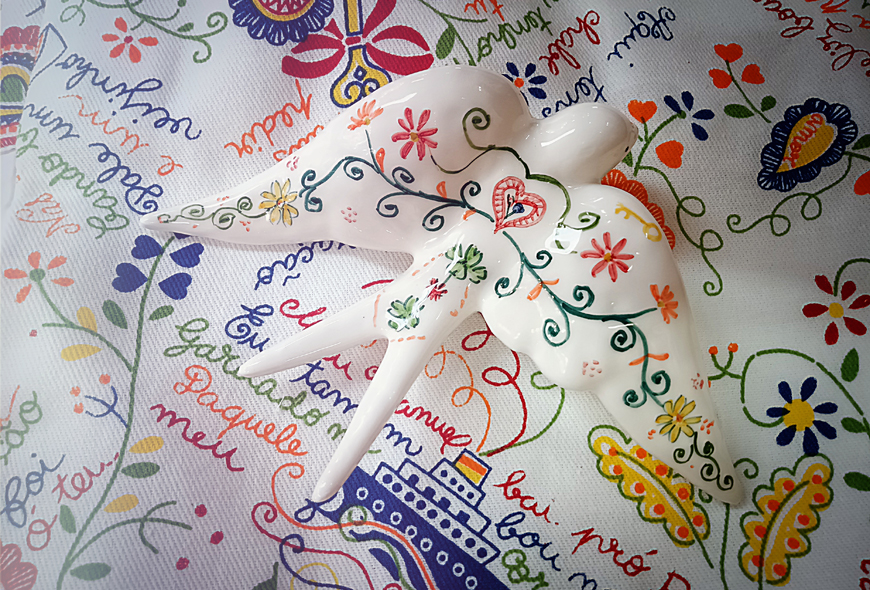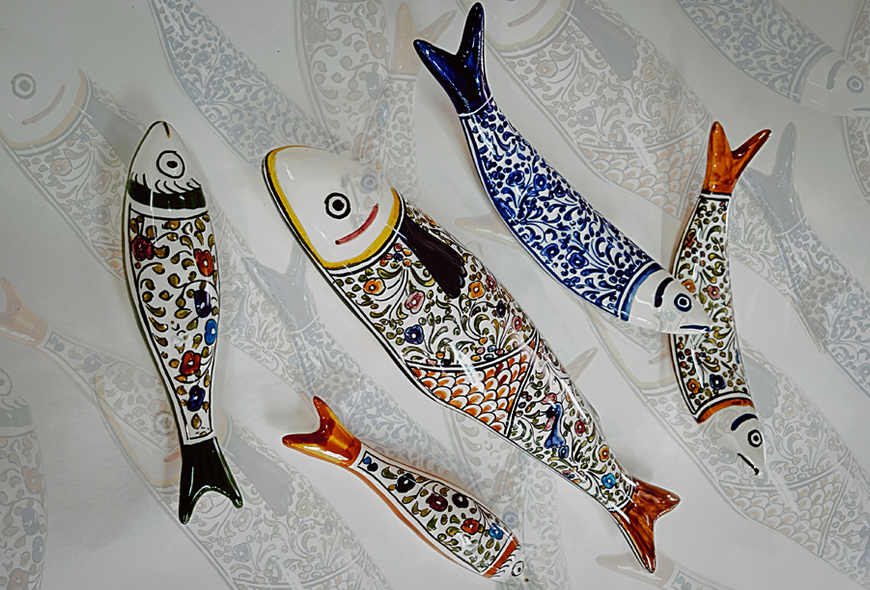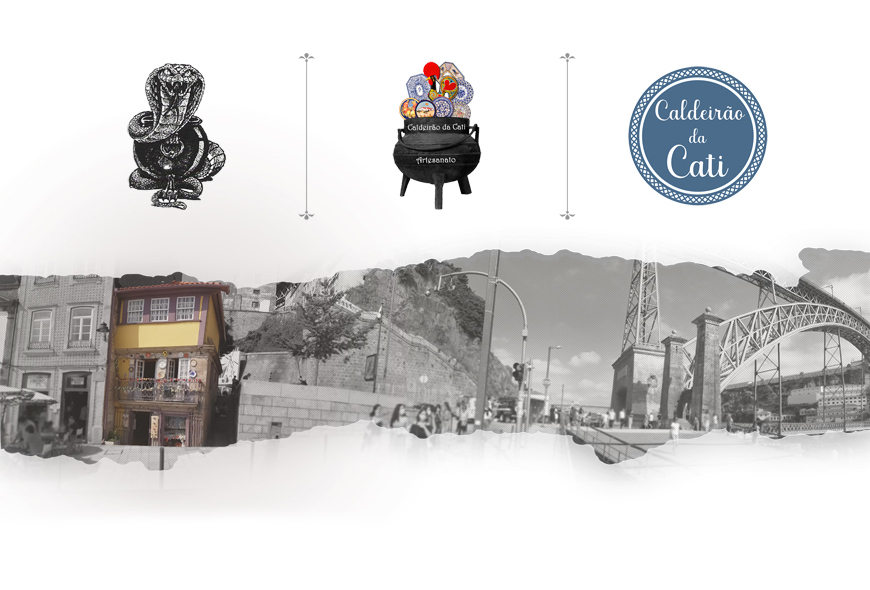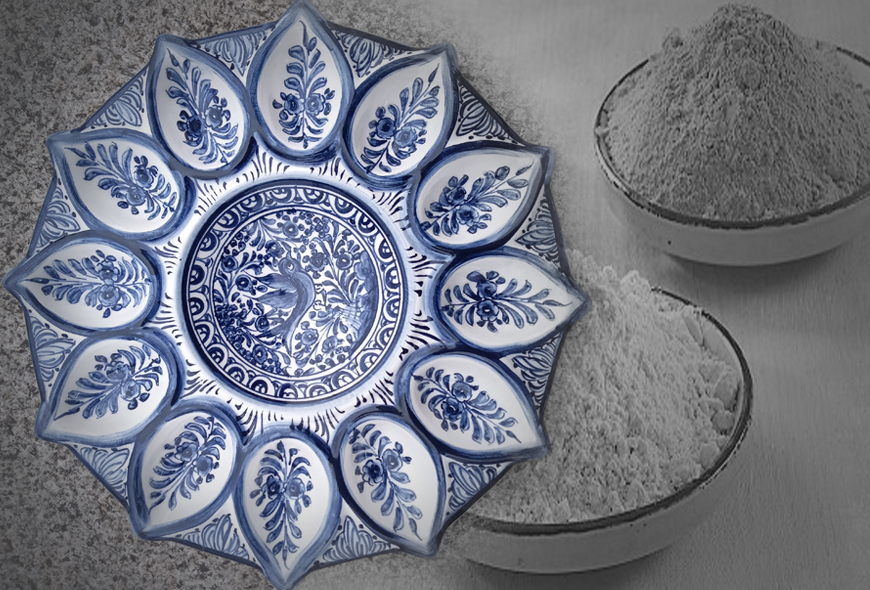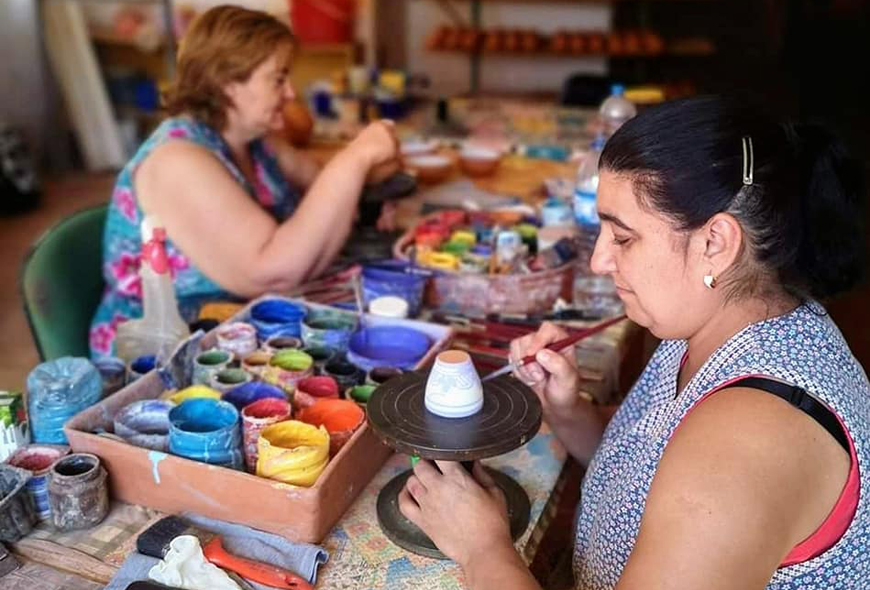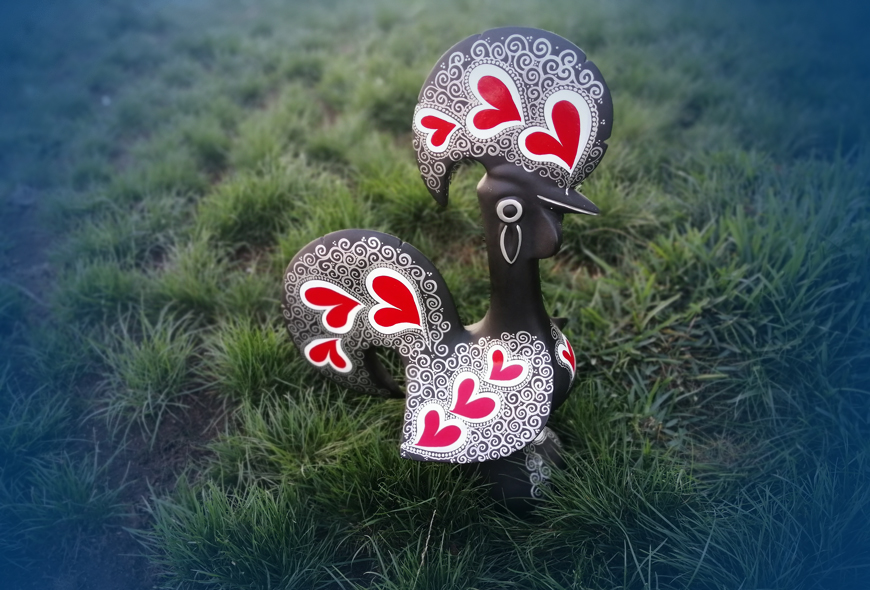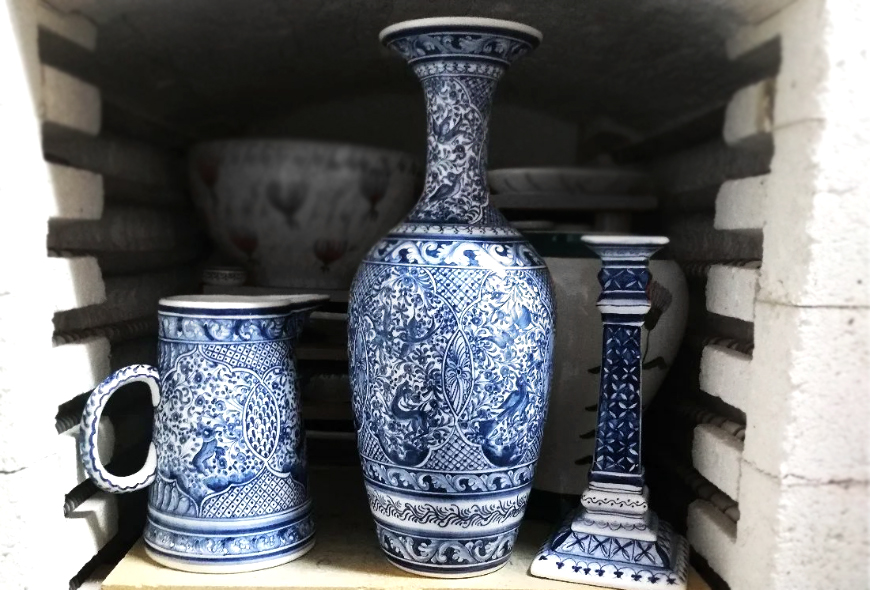Blogs
15 January, 2025
0 Comment
Leave Comment
Tradition, Culture,
and Natural Beauty The Azores, a breathtaking Portuguese archipelago of nine
volcanic islands in the middle of the Atlantic Ocean, are a true treasure of
ancient traditions, stunning landscapes, and rich cultural heritage. Among the
many artistic expressions that define Azorean identity, certified handcrafted
embroidery stands out a delicate, high-quality art form tha...
10 January, 2025
0 Comment
During the COVID-19 pandemic, Cristina, one of the talented painters behind traditional Portuguese Coimbra ceramics, embraced creativity during challenging times. With business at a standstill, she viewed this moment not as a setback but as an opportunity to reinvent her artistic approach. Driven by a passion for artistic exploration, Cristina began experimenting with bold new designs that fused t...
10 January, 2025
0 Comment
For centuries, northern Portugal has been renowned for its exquisite textile craftsmanship, deeply rooted in history and cultural identity. The traditional scarves of this region are more than just accessories they are symbols of heritage, artistry, and timeless elegance. Each piece reflects the unique character of the region, passed down through generations and celebrated in folk costumes, festiv...
9 January, 2025
0 Comment
A Tradition of Durable Pottery: Barcelos, a picturesque town nestled in northern Portugal, is celebrated for its long-standing tradition of pottery-making. Among its most prized creations is its distinctive red clay pottery, a hallmark of Portuguese craftsmanship. This unique clay, sourced locally, is renowned for its durability and versatility, making it ideal for both decorative and u...
30 October, 2024
0 Comment
Rafael Bordalo Pinheiro was one of the artisans of Caldas da Rainha and was the main figure responsible for popularizing vegetable-themed ceramics in Caldas da Rainha. He accepted an invitation to lead the artistic department of the Fábrica de Faianças das Caldas da Rainha, where he began creating a vast collection of pieces inspired by nature, especially vegetables like cabbages, pumpkins, lettuc...
16 October, 2024
0 Comment
The "Lenço dos Namorados" is a traditional piece of Portuguese craftsmanship, originating from the Minho region in northern Portugal. This object, also known as a "request kerchief" or "love kerchief," has a rich history associated with romance and courtship in Portuguese villages, especially during the 18th and 19th centuries.Traditionally, the kerchiefs were hand-embroidered by young women, who ...
24 September, 2024
0 Comment
The traditional folk costumes of Portugal reflect the country’s rich cultural diversity and vary significantly from region to region. These costumes are an important part of the cultural heritage and are deeply connected to the traditions, festivities, and way of life of rural communities.MinhoIn northern Portugal, the Minho costume is one of the most iconic and vibrant in the country. Women dress...
17 August, 2024
0 Comment
It is thought that working with materials such as clay, kaolin or white stone has been practiced in Alcobaça since the Neolithic period. The polychrome clay sculptures, created by monks, appeared during the construction of the Alcobaça Monastery and in the 18th century the first pieces appeared with the word "Alcobaça" inscribed in the center. Later, in 1875, a ceramics factory was founded by José...
15 August, 2024
0 Comment
It is the richness of the stone decoration on Nisa's dishes that gives it shine and specificity. Currently, three potteries still work daily, using a mixture of more consistent clay, white, and black, softer, thus facilitating the handling of the paste that they model entirely on the wheel. The piece, after drying, is painted with red clay from the Portalegre area. After applying this paint, the s...
1 August, 2024
0 Comment
The tiles are recognized as one of our country's greatest treasures, both by Portuguese and international visitors.The Portuguese tile originated in Spain, through a trip taken by King D. Manuel I, in 1498. The monarch was noticed and enchanted by the artistic looks and decided to bring the concept to Portugal.The colors used in Portuguese tiles are mainly yellow, orange, green, brown, gray and pr...
26 May, 2024
0 Comment
The swallow is a symbol of Portuguese culture and it is very common to see them hanging on the facades of Portuguese houses.Swallows are migratory birds. These amazing birds have variable colors and shapes. Their arrival in Portugal means the beginning of spring and also the beginning of the mating season. These black-winged and black-tailed birds have a characteristic that differentiates the...
24 April, 2024
0 Comment
Roasted
sardines are the obligatory dish at the big São João festival in Porto. There
is no table at the S. João festival on the 24th of June that does not have the
famous grilled sardines, which is why it is quite representative of the Porto
region.S. João is
a popular festival full of traditions, including leeks and plastic hammers,
used to hit the heads of people passing by, as well as th...
8 April, 2024
0 Comment
Did you know?! This store was initially a mystical item store, a snake with a cauldron was its first logo. In mid-2010 the logo was changed, because the store was then a ceramics store with a selection from the various regions of Portugal, so the old logo no longer made sense. Therefore, the cauldron was maintained but the snake was replaced with ceramics. The current logo (round and blue) wa...
28 March, 2024
0 Comment
Very famous in
Italy and Portugal, faience is a similar type of ceramic and belongs to the
porcelain family, as it is produced with less kaolin than porcelain but is
older and more traditional than porcelain, as well as being more resistant.Faience has
porous masses of white or ivory color and requires subsequent glazing. They are
used to create decorative pieces, dinner sets, tea sets, etc.P...
21 March, 2024
0 Comment
It is quite common for our customers to ask whether the black clay is painted, but the answer is, no. It is not painted, as the black color is achieved both on the outside and inside through cooking, reduction of oxygen and the absorption of carbon (smoke). In addition to its characteristic color, this method , provides good waterproofing capacity.Soenga is the name given to the ancestral process ...
27 September, 2021
0 Comment
In São Pedro do Corval, in the municipality of Reguengos de Monsaraz, in the district of Évora in Alentejo, there is a clay that is already ready to work.The ceramics of Alentejo region, is one of Portugal's most emblematic artisanal traditions. This small village, in the municipality of Reguengos de Monsaraz, is known as the "capital of pottery" and preserves a ceramic heritage that dates back ce...
7 September, 2021
0 Comment
A long time ago, a Galician pilgrim was passing through Portugal on his way to Santiago de Compostela to honour a vow. On reaching Barcelos, he decided to spend the night at an inn. The townsfolk, who were up in arms over a crime for which they could not find the culprit, accused the poor pilgrim who, despite protesting his innocence, was imprisoned and sentenced to death by hanging.For his last w...
19 March, 2021
0 Comment
Coimbra, in the center of Portugal, has produced ceramics for many centuries and possesses the oldest written document related to national ceramics.The pottery of Coimbra represents the Eastern tradition - porcelains of China that was brought back by the sailors during the time of the discoveries - and also the influence of the Arab style.Since 1960 there have also been produced ceramics insp...

